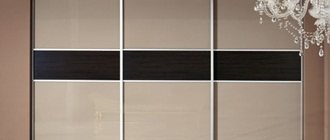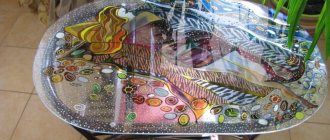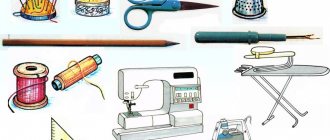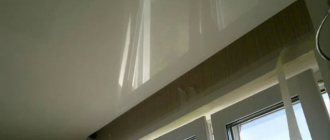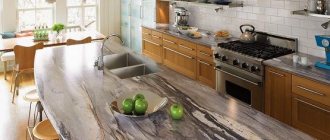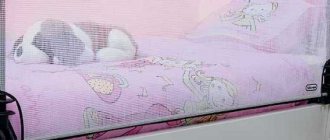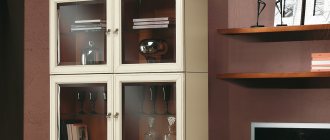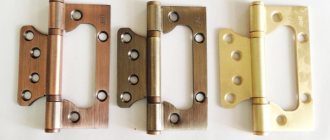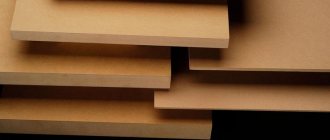The desire to use fashionable foreign words is sometimes misleading, for example - what are napkins for decoupage? The answer is very simple - these are the most ordinary napkins with a pattern for appliqué. Yes, the technique involves more operations than just gluing, but the principle is still in the application. But since the term “decoupage” has taken root so firmly in the handicraft environment, we will use it. In this review from HouseChief, we'll look at the different types of wipes and the basic principles of how to apply them for those learning the basics of the art.
How are decoupage napkins different from regular ones?
So, the meaning of the decoupage technique is to apply applique to the surface of any objects. Due to the fact that a thin napkin with a pattern is applied, the applique looks like a pattern and imitates painting.
Decoupage is a beautiful art for decorating various surfaces
Is it possible to use ordinary serving napkins, since many of them are decorated with interesting and bright motifs? Don't rush to give an answer. Before you figure out whether such a napkin is suitable, you need to consider its texture.
Based on this, we get the main requirement for the material: it must be as thin as possible and contain a colorful pattern or ornament
Cellulose napkins made of non-woven material or with fabric imitation are not suitable for appliqué. Typically these are large products measuring 40x40 cm², which do not have a layered structure and may have a fleecy surface. They are too thick for such delicate work, in addition, they can even change color from contact with varnish. So the conclusion is: napkins made of non-woven material are not suitable for decoupage.
Do not use cheap, loose napkins that are sold in large packs. They are made from waste paper. They practically dissolve upon contact with glue and varnish
Varieties
Since its inception, the discussed decoration technique has not only gained great popularity, but has also changed somewhat. Combining and experimenting, people introduced new elements into it. This is how several directions appeared, each of which has its own characteristics.
Based on
The decoupage technique uses completely different motifs. The main ones can be identified as follows:
- Landscape. There is often a whole story hidden in an image. If possible, such pictures should be glued to the entire product. Boundaries must be clearly defined.
- Flowers. The most common motif in decoupage. To make the image look good on furniture, you need to choose options with a light background. Size is no less important - a picture that is too small will be lost on the product.
- Fruits, berries, vegetables and mushrooms. Napkins with similar images are often used to decorate kitchen cabinets.
- Religious motives. The faces of saints can be used to make icons.
- Historical. Motifs such as antique, Gothic, Romanesque reflect styles that arose at different times. For work, napkins, clay, mosaics, leather, and metal fittings are usually used.
- Pastel shades. The most versatile option that will fit into most classic styles.
The image of a grapevine is popular. Such motifs are appropriate in a country house or in a country house decorated in country or Provence style.
Scenery
Flowers
Fruits
Religious motives
Historical subjects
Pastel shades
By style
There are several styles in decoupage:
- Shabby chic. Translated it means “shabby chic”. As you can guess from the name, the main features of this trend are the worn surface and cracked paint - craquelure. In combination with pastel colors and romantic motifs, this technique gives the furniture a special charm. The style is characterized by a light or white background, images of roses, angels and floral patterns. Craquelure or regular paint is used as a base.
- Victorian. Luxurious and pretentious style, which combines several directions at once. It is characterized by gilding, a dark background and natural wood. Victorian style in decoupage is often complemented by gilded and voluminous elements.
- Provence. A common trend, the characteristic features of which are images of lavender, grapes and flowers in pastel colors. The basis is taken from bleached wood, often aged.
- Semple City or "simple city". This type is characterized by the use of newspaper clippings and pictures with torn edges. This style does not require clear boundaries, which is why it is often chosen for modern, vibrant experiments.
- French vintage. It combines different directions, but at the same time maintains simplicity and sophistication. For decoupage in this style, you need to choose light shades and simple images.
Although Provence and shabby chic styles are very similar, they are not the same direction. They differ in shades and the presence or absence of gilding.
Shabby chic
Victorian style
Provence
Semple City
French vintage
By technique
There are several types of decoupage based on the technique used:
- Straight. The simplest style is gluing an image to a surface. The picture can be cut out from paper, printout or napkin. You can glue the image onto glass, wood, ceramics, and plastic. The surface can be pre-painted.
- Volume. This technique uses a combination of classic decoupage and volumetric elements. You can paste the image onto a ready-made relief or form it yourself using paper, fabric and other materials. Creating a decorative item in this direction requires creativity.
- Art. The image is glued to the surface and then completed with paints. This way you can make the picture brighter, more voluminous and more naturalistic. Drawing requires certain skills, so this type of decoupage is suitable only for professional artists.
- Back. In this case, the image is glued to the back of the object; accordingly, this decoupage is only suitable for transparent products. The technique looks unusual, creating a feeling of a three-dimensional pattern.
- Decopatch. In this technique, furniture is covered with pieces of paper not partially, but completely. In this case, many fragments are used, which, when combined with one another, form a real picture.
Criteria for choosing white furniture for living rooms of different styles
Some types of decoration are available only to people with professional art education or a high level of skill, for example, artistic and volumetric decoupage. For beginners, it is better to start with a direct technique or decopatch, only then can they move on to more complex work.
Straight
Volume
Art
Back
Decopatch
Types of decoupage napkins: from simple to complex
So, for artistic appliqué, napkins made of high-quality paper are suitable, having a multi-layer structure and high-quality designs applied with durable paints.
How many layers should there be in a decoupage napkin? Two, three or more? This is not important, the main thing is that the layer on which the drawing is applied is thin. So for work you only need the very top layer, which is where the paint is applied.
Both plain-colored options and napkins with a pattern can be useful for work - it all depends on your idea
A separate element in this series are napkins made of rice paper. They have a thin and very dense structure, they are glued easily and without wrinkles. This is the material that is recommended for beginners to use.
Tips and tricks
The easiest way to work using decoupage technique is with natural wood. It is easy to process and the results last for a long time. Chipboard is also suitable for decoration, but before starting work, it is important not to forget to degrease the surface.
Types of children's sofa beds, main selection criteria
For decoration you can use napkins, paints, gilding or carving, craquelure. All these methods complement decoupage, making the furniture even more beautiful. Ideas for creativity can be taken from art, the environment or thematic resources. Specialized stores have entire departments that sell rice paper with a variety of images.
Decoupage is an old technique that has recently found new life. With its help, you can update your furniture and give your home or apartment a special chic. The main thing is the desire to create and the availability of free time.
The easiest way to work with natural wood
The craquelure technique will ideally complement decoupage, making the furniture even more interesting.
With the help of decoupage it is easy to update old furniture and give the atmosphere a special chic
Does the country of origin matter?
Decoupage napkins are produced in almost all countries of the world. But what’s interesting is that European brands in most cases hide Chinese products. The reason is simple. It lies in the low cost of Chinese production, which is now being used to the maximum by European concerns. Is this bad? It all depends on how legally branded products are produced in each specific case. If the production is official, the quality will be strictly controlled. But if it’s a fake, then, you know, there are no guarantees.
How to identify a fake in a branded product? Visually, you can notice pixelation of the card, a violation of its color scheme, a shift in the design relative to the center or other trimming, and unstable dyes. It's good if you have the opportunity to compare the fake with the original.
It is undesirable to use a fake; it can stain the surface and spoil adjacent images or backgrounds.
Advice! If you have doubts about the quality of the material, check it: wet a napkin and squeeze it into a glass: if the water is colored, feel free to throw it away.
